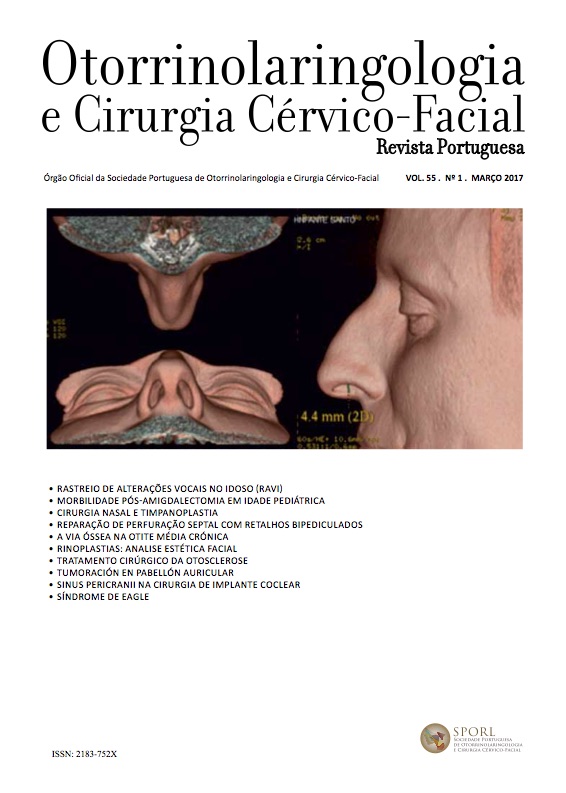Sinus Pericranii, a Challenge in Cochlear Implant Surgery
DOI:
https://doi.org/10.34631/sporl.635Keywords:
Sinus pericranni, Síndrome CHARGE, malformação venosa, implante coclear, abordagem suprameatalAbstract
We pretend to expose a clinical case, of a 19 year old male patient, with CHARGE syndrome diagnosis. Venous malformations of the temporal bone are quite rare, but they are common in this syndrome. Because of a progressive sensorineural hearing loss in his right ear and a cophotic left ear (VIII agenesis), he became a cochlear implant candidate by the age of 16. He had an absolute contraindication to perform surgery in the left ear, so the implant was placed in the right ear, by a suprameatal approach (because of his venous malformation). No complications were registered. Functionally, the cochlear implant raised the mean pure -tone threshold to 42dB.
Downloads
References
Friedmann DR, Amoils M, Germiller JA, Lustig LR, Glastonbury CM, Pramanik BK, Lalwani AK. Venous malformations of the temporal bone are a common feature in CHARGE syndrome. Laryngoscope. 2012 Apr;122(4):895-900.
Bouali S, Maamri K, Abderrahmen K, Asma B, Boubaker A, Hafedh J. Clinical and imaging findings in a rare case of sinus pericranii. Childs Nerv Syst. 2015 Sep;31(9):1429-32.
Choi JH, Woo HY. The neglected emissary vein in mastoidectomy; persistent petrosquamosal sinus in the laterally located sigmoid sinus. Am J Otolaryngol. 2013 May-Jun;34(3):255-7.
Çam OH, Karataş M. A Life Threatening Pitfall in Ear Surgery: Extracranial Sigmoid Sinus. J Craniofac Surg. 2015 Oct;26(7):e619-20.
Kronenberg J, Baumgartner W, Migirov L, Dagan T, Hildesheimer M. The suprameatal approach: an alternative surgical approach to cochlear implantation. Otol Neurotol. 2004 Jan;25(1):41-4; discussion 44-5.






